Vince Darcangelo's Blog, page 14
June 26, 2013
June Recommendations
In another day we’ll be heading off to London, and around this time Transgress will publish its annual summer book preview/review. In the coming days, we’ll be dishing out smaller portions of the issue, beginning with today’s blurbs about some books you may have missed this past month.
Joyland, Stephen King
I plan on devouring this little beauty on the first leg of the transatlantic flight. As 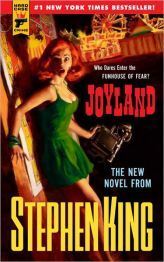 you know, we at Ensuing Chapters and Transgress Magazine are all about funhouses and noir. So, a Stephen King paperback original about a funhouse for the imprint Hard Case Crime?
you know, we at Ensuing Chapters and Transgress Magazine are all about funhouses and noir. So, a Stephen King paperback original about a funhouse for the imprint Hard Case Crime?
Bring it.
King’s previous offering through Hard Case was The Colorado Kid, a wonderfully creepy tale about an unsolved murder in a small Maine town. Some of you may also know it as the SyFy program, Haven.
I’ve got my ticket, and I’m already chilled thinking of the horrors that await in Joyland.
Creation: How Science is Reinventing Life Itself, Adam Rutherford
I recommend Adam Rutherford’s Creation for any fan of science writing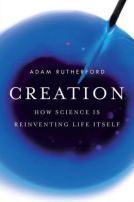 . However, my endorsement comes with a disclaimer: The electronic review copy I downloaded was corrupted and difficult to navigate. The result is that I didn’t read this book front to back, as I normally do. However, I was able to access about half of it, and what I read I thoroughly enjoyed.
. However, my endorsement comes with a disclaimer: The electronic review copy I downloaded was corrupted and difficult to navigate. The result is that I didn’t read this book front to back, as I normally do. However, I was able to access about half of it, and what I read I thoroughly enjoyed.
Of particular interest to Transgress readers are the graphic details of surface cuts when explaining how the skin recovers from a wound. The squeamish reader might want to tag this book as horror for this reason alone.
Though I doubt there are any squeamish readers this blog.
Stylistically, Creation blends wit and storytelling with fair doses of hard science. Fans of Sam Kean, Mary Roach and Malcolm Gladwell will find much to love in its pages.
The Ocean at the End of the Lane, Neil Gaiman
Not since Joseph Campbell has an author had both a profound understanding 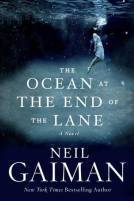 of mythology and the ability to present it to a general audience with such passion. I see Gaiman and Campbell as two sides of an intergenerational coin: the academic who deconstructs myths and the author who creates them.
of mythology and the ability to present it to a general audience with such passion. I see Gaiman and Campbell as two sides of an intergenerational coin: the academic who deconstructs myths and the author who creates them.
His new novel, his first for adults since 2005′s Anansi Boys, concerns a young boy returning home–and reconsidering odd events from summers past.
The Hole, William Meikle
And what summer would be complete without a subterranean adventure? This twisted treat comes from one of my favorite publishers, DarkFuse, and concerns a chasm (literally, not figuratively) snaking through a rural town. What comes next promises to be delightfully morbid. I’ve got this on my to-read list and can’t wait to descend into its depths. A review will come later this summer.
Come back tomorrow for a review of The Unrest-Cure and Other Stories by Saki, illustrated by Edward Gorey.


March 19, 2013
Garry Wills: Why Priests?
Why Priests?, the latest book from author and historian Gar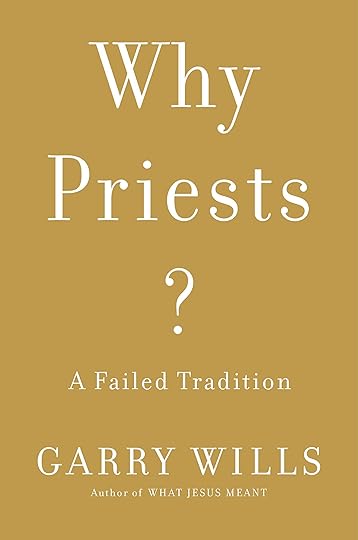 ry Wills, is one slippery fish. The provocative title suggests a foundation-shaking argument, but the book is as much biblical history as contemporary critique. At first glance, the title may sound anti-Catholic, but Wills is a Catholic, and even dedicates the book to a priest.
ry Wills, is one slippery fish. The provocative title suggests a foundation-shaking argument, but the book is as much biblical history as contemporary critique. At first glance, the title may sound anti-Catholic, but Wills is a Catholic, and even dedicates the book to a priest.
And his argument has nothing to do with church scandals, church politics or past or current leadership.
So slippery is this book that is has two different titles, appearing in most places as Why Priests?: A Failed Tradition and in others as Why Priests?: The Real Meaning of the Eucharist.
I refer to it by the former, as that seems to be most prevalent, but I believe the latter provides a better description of the book. “A Failed Tradition” suggests an accusation or a polemic, but Wills answers the question, “Why priests?” not with slings and arrows, but with scripture and scholarship. It reads more like a history of the priesthood.
And what a curious history indeed. Wills sifts through a Gibraltar-esque mountain of biblical research, interpretation and second and tertiary sources. He explores the familiar (the AAA trinity of theologians: Augustine, Anselm and Aquinas) and the lesser known (Melchizedek). Most of his time is devoted not to priests directly, but to the Eucharist and the New Testament’s Letter to Hebrews.
Overall, this is a fascinating, well-written and -researched book, and I enjoyed the biblical scholarship and moments of philosophy. However, I’m not buying it as an argument against the priesthood. Only in his opening and conclusion does Wills concentrate his energies directly on the issue of priests. The rest is a somewhat tangential flow of information.
I recognize what Wills is doing: He’s searching every back alley and byway for any topic related to the priesthood. But it’s easy for the reader to lose the thread. The subject matter was interesting enough to keep me reading, but at the end of every chapter, I wasn’t quite connecting the material with the thesis.
In the chapter, “A New High Priest,” Wills turns from historian to philosopher, and this is when the book is most compelling. First, he examines the ritual of sacrifice and the logical pitfalls one stumbles upon when making parallels with crucifixion in Letter to Hebrews:
If what Jesus is doing is making out a bequest, the receivers of the bequest are not the receivers of the sacrifice—which is offered to the Father, who can get no benefits from the bequest [147].
Most interesting is the chapter titled, “Who Killed Jesus?” Again, scripture and theology are bound in logical paradoxes. Even Anselm, father of the ontological argument, struggles with the order of the Trinity (a biblical family tree with seemingly circular paternity). Is the Father the prime mover? The Trinity?
Perhaps my favorite paradox is the Eucharist. If the body and blood of Christ is truly present in the bread and wine (transubstantiation), what happens when it comes out the other end? Is Jesus still present post-processing? Apparently, this was, historically, an important topic of theology, and the answer, as you might expect, is a little odd.
In the closing section, Wills lays out his final argument: “If Peter and Paul had no need of priests to love and serve God, neither do we” [256].
I believe this is his elevator pitch. He’s not arguing against Catholicism, he’s not even calling for (nor expecting) the abolishment of the priesthood. He’s simply making a case that, spiritually, priests aren’t a necessary conduit to God.
For that, Wills makes a strong and compelling case.


March 12, 2013
A Playground for Insomniacs
For some, sleep is a peaceful proposition. For others, like me, lights out has always been more of a punishment. The latter is the intended audience of Evil Hat Productions’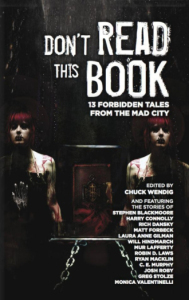 Don’t Read This Book, a collection of 13 waking nightmares for the hard of sleeping.
Don’t Read This Book, a collection of 13 waking nightmares for the hard of sleeping.
These stories are set in the world of the Don’t Rest Your Head RPG, which I haven’t played, but seems perfectly designed for someone like me. My loose understanding of the game, based on reading this book (despite the admonition of its title) and researching a little about the RPG, is that it takes place in a dystopian dreamland (Mad City) populated with clockwork cops, shadow stalkers and any other gritty creature your mind can conjure up. You are among the Awake—insomniacs who have stayed up far too long and find themselves within the freak show of Mad City.
The Awake are in quite the pickle. Fall asleep and you die. But stay awake for too long and you’ll go mad and permanently inhabit the nightmare.
This is genius. Having been lifelong frenemies with the Sandman, I recognize this world, and it is more terrifying than most fictional places. Probably because I know what it feels like to go to work on your fourth day awake. I know the psychedelic side effects of clocking out from your graveyard shift and then clocking in at your day job a few minutes later. Things move in ways they shouldn’t, you lag a few seconds behind in every conversation and, worst of all, a mechanical noise fills your ears—not a buzz or a ring, but a machine-like pulsing that clouds thought and creates the sensation that someone is constantly following you.
Hallucinate from staying awake? Been there. That’s why the nightmares within Don’t Read This Book, edited by Chuck Wendig, are familiar territory for me.
And thoroughly enjoyable.
Standouts include Stephen Blackmore’s “Don’t Lose Your Patients,” Mur Lafferty’s “Don’t Bleach Your Memories” and Harry Connolly’s “Don’t Chew Your Food,” but this is a solid anthology front to back.
Gamers, steampunks, urban fantasists and horror fiends will find something to love in here. But those who may enjoy it most are us insomniacs.
Those of us who know that the torture of falling to sleep is worse than any nightmare that may be lurking on the other side.


March 6, 2013
Hilary Davidson: Evil in All Its Disguises
If I were writing a one-word review of Hilary Davidson’s Evil in All Its Disguises, released March 5, that word would be: incongruous. And it would be a massive compliment.
In this subtle crime novel, the third in the Lily Moore series, Davidson drops us in an Escher-like room of distorted realities. Everything looks normal, just slightly askew, and it’s these atmospheric incongruities that make Evil such an enjoyable read.
For series initiates, such as myself, Lily Moore is a travel writer with a checkered past: a mentally unstable family history; a deceased, junkie sister; a quasi-gangster business tycoon ex who will do anything to get her back. This is the baggage she takes with her to Acapulco to review the once-glamorous Hotel Cerón.
It’s nothing unusual: just another press junket with a circle of travel writers, and a PR flak, she’s known for years. Yet, when she arrives at the hotel, Moore is surprised to find it in disrepair, and disturbed to learn that one of her closest friends on the trip, Skye, is in over her head on an investigative piece. During their brief and baffling conversation, Skye expresses concern for her safety, and then steps away to take a call.
And so the unraveling begins. Skye doesn’t return from that phone call, and nobody at the isolated resort seems concerned. Through her exploration, Lily learns that the hotel is a recent acquisition by her ex’s company, manned by his henchman, Gavin, and before long she realizes she’s been lured to the Hotel Cerón under false and deadly pretenses.
There is a breathless quality to the prose that I enjoyed. The action is tightly contained (the plot unfolds in around 48 hours), and, from one chapter to the next, I couldn’t put it down. Aside from a superfluity of internal dialogue and redundant flashbacks, the writing is well-paced and tightly organized, and Davidson manages to give us a tour of the resort, including the unfinished bungalows, the empty wings and even the rotting interior, without feeling like a travelogue—probably due to her actual background as a travel writer. (To my fellow gluten-intolerants I recommend her Gluten-Free Guidebook blog.)
But as with a travel review, the pros must be weighed against the cons. Evil suffers from an overload of plot twists. The phrase “trust no one” certainly applies. This isn’t all bad, as the finer twists reveal character complexity (and that delicious incongruity). But as the plot turns pile up, they begin to lose credibility.
Evil diverges from the transgressive and brutal horror literature usually reviewed in this space. There’s a cozy quality to the story that is actually kind of refreshing. The book kept me up at night not because it was disturbing, but because it was engaging.
I predict big things for this book, and I’m sure it will earn a deserved place on the best-seller list.


February 27, 2013
Peter Clines: 14
If I’ve learned anything from my lifelong obsession with horror, it’s that: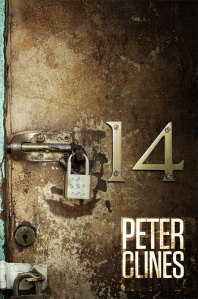
If someone introduces you to an opportunity too good, and too convenient, to be true, you probably shouldn’t take it because it can only mean trouble. And,
If someone introduces you to an opportunity too good, and too convenient, to be true, you definitely should take it because you are guaranteed adventure—most likely one shadowed with conspiracy and gore.
So it goes in 14, by Peter Clines, in which an apathetic data-entry temp (Nate) is referred to a cheap apartment, where rents are suspiciously low, utilities shockingly free and the neighbors… well, the ones who stick around are… interesting.
The setting for this quasi-Lovecraftian, quasi-apocalyptic story is the Kavach building, which seems odd even by L.A. standards. Early in his stay, Nate notices some curious features of the old building: all the units have different dimensions; the plumbing is an inefficient web of pipes; there are discolored lights; green, mutant cockroaches; and, best of all, certain apartments are padlocked shut.
Among them, apartment 14.
This is where Clines truly excels. He develops a chilling atmosphere and social dynamic within the walls of the Kavach, and I absolutely devoured the first half of the book. The dialogue is shallow in spots, but the characters are as mysterious as the building, and as more secrets unfold, we follow a resilient crew of tenants into the deep tunnels beneath the Kavach.
Of all that I loved about the first half of this book, the tunnels were by far my favorite. The subterranean setting is magnificently drawn, and it’s that sweet spot in the book where the characters are fully realized and revealed, and the reader is absorbed in their struggle.
The second half of 14 is very entertaining, particularly the third quarter, but lacks the literary muscle of what came before. The first half was tight, focused, suffocating. It narrows until we get to the bottom of the tunnels, but then we begin expanding and things get a bit turbulent. Clines does a solid job of planting intriguing clues to be sussed out later, but the ending suffers from too much revelation.
I’d like to illustrate this with an anecdote.
My first apartment was a crumbling duplex on Tamplin Street in Sharon, Pennsylvania. It was dumpy and narrow, but the perfect incubator for two eventual writers (me and my roommate, Todd).
Particularly inspiring was the basement.
There was a biohazard sign on the basement door, with the words “Fallout Shelter.” The house was old enough that the sign could have been legit, though we suspected it was decoration. The basement itself was a throwaway slab of concrete—functional, boring, filled with spiders. The only thing scary about it was the rickety set of stairs.
And the unexplained, nailed-shut door on the northern wall.
The mystery door was almost a square, shaped more like a large window than a door, and rather than starting at the floor, the bottom edge was two feet off the ground. The top edge was only a few feet higher. It was the size and shape of a cupboard or a crawlspace. But why was it nailed shut?
Horror fanatic that I am, I tried to pry it open at least enough to glimpse what was on the other side. Thankfully, I wasn’t able to. Most likely, it was just a collapsed storage space (this was a mining/steel town, and it was fairly common for back yards to become ravines). It contained probably nothing more than the earth-packed remnants of a sinkhole.
But because I never got a look behind the mystery door, it has never lost its magic. Instead of a sinkhole, in my mind that door seals off a series of tunnels that burrow beneath our town, perhaps an old Prohibition-era bootlegging route, or perhaps it connects with the old cemetery two blocks away. Instead of storage space, there is a cache of forbidden scrolls. Or, befitting my Poe-obsessed youth, this is the subterranean vault where our slumlord buries alive his tenants.
Who knows, maybe even a bomb shelter.
The point is, I’m still fascinated by that shuttered basement door.
And that’s why the first half of 14 is an absorbing read. This is literature for anyone who has searched every new apartment for secret passages, hiding spots or trapdoors. Crawled through cobwebbed eaves, the musky underbelly of mobile homes and believes, always, that every building has a secret history to tell.
But unlike that basement door on Tamplin Street, we do learn what’s inside those padlocked rooms at the Kavach building. What we find there is original, for sure, but it dispels the magic. Each new revelation takes us further away from believability until 14 enters camp territory. And I’ve got nothing against camp. Truly, this part of the book is fun.
But it doesn’t mesh with the earnestness of the setup.
The action-packed finale further untethers the reader. The sequences are rushed, and where dialogue and observations from the characters should anchor us, we get snarky quips and CGI visuals. There is a nice homage to Lovecraft throughout, but HPL’s great trick was that we seldom saw what his creatures did. Rather, he hinted at what they could do.
Clines is a hell of a writer and storyteller, but here, he opens one door too many.
But that’s not entirely a bad thing, and certainly not a deal breaker (I just have a preference for more existential horror). This is a book I highly recommend. It’s fun, engaging, and I only give it four stars instead of five because of the overload of revelation at the end.
I’d prefer to leave a door or two shut. I want to imagine what’s behind it. A body? A tunnel? Treasure? Or nothing?
The best part is that I’ll never know.


February 14, 2013
Steven Schwartz: Little Raw Souls
Here’s a link I forgot to post last week. Steven Schwartz’s Little Raw Souls. We’ve got a review, an interview and full audio on this one. Enjoy!
http://transgressmagazine.com/2013/02/07/interview-steven-schwartz-little-raw-souls/


Stephen Dobyns: The Burn Palace
Stephen Dobyns‘ new novel, The Burn Palace, is a difficult book to deconstruct. The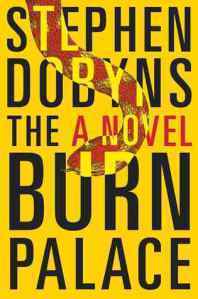 narrative is a tangle of shifting perspectives and sharp turns, and stylistically, is a bit disarming at first.
narrative is a tangle of shifting perspectives and sharp turns, and stylistically, is a bit disarming at first.
However, we’re in the hands of an old master. What Dobyns does better than most is capture the quirks and suspicions of small-town America, and similar to his 1997 masterpiece, The Church of Dead Girls, The Burn Palace offers us an eagle-eyed, warts-and-all perspective of residents of Brewster, Rhode Island.
As with the loose-ended Church, the horror lives not so much in the conflict, but rather in how the residents respond to the conflict. In this novel, Dobyns’ first in more than a decade, the catalytic event is a dramatic kidnapping. A newborn has been stolen from the local hospital, replaced with a corn snake, and thus, the town of Brewster is shrouded in mystery and controversy.
And fear.
From the local diner to holistic healing centers, Brewster is that odd amalgamation of new age/old age found in many small towns. It is also a town of secrets and tragedy and disaster. Dobyns brings to life the town’s diverse personalities, going to door to door in a literary trick or treat.
It’s kind of like Winesburg, Ohio—if Sherwood Anderson had grown up on Stephen King’s street.
Of course, the prose is excellent, and only someone like Dobyns could reconcile this many narratives and POVs in one book. That said, this is a dense work, more so for the constant shifting of perspectives, never setting us on stable ground.
But then again, isn’t that the point? Rather than simply using his words to construct a referent, Dobyns, with his background in poetry, uses the words themselves to disorient, to make us confused, uncomfortable and always uncertain, but excited, about what comes next.


January 23, 2013
Best American Essays 2012
 The Best American Essays 2012 by Robert Atwan
The Best American Essays 2012 by Robert Atwan
My rating: 4 of 5 stars
David Brooks, as expected, compiled a thoughtful and engaging selection of essays.
Faves:
Miah Arnold: “You Owe Me”
Dudley Clendinen: “The Good Short Life”
(“But we don’t talk about how to die. We act as if facing death weren’t one of life’s greatest, most absorbing thrills and challenges. Believe me, it is. This is not dull.”)
Mark Edmundson: “Who Are You and What Are You Doing Here?”
(“In reading, I continue to look for one thing — to be influenced, to learn something new, to be thrown off my course and onto another, better way.”)
Joseph Epstein: “Duh, Bor-ing”
(“One can also tell a great deal about a person by what bores him.”)
Jonathan Franzen: “Farther Away”
(“The allure of suicide, the last big score, may go underground, but it never entirely disappears.”)
Malcolm Gladwell: “Creation Myth”
Alan Lightman: “The Accidental Universe”
Ken Murray: “How Doctors Die”


January 22, 2013
Recommended Reads: Jan. 22
Nevada Barr: The Rope. In Anna Pigeon, Barr has created one of the most o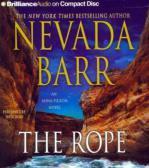 riginal and enjoyable protagonists in the mystery genre. With each book set in a different state park, fans have followed Pigeon’s adventures through more than a dozen novels. This time, Barr takes us back to 1995, where it all began for Pigeon. First published in 2012, the audiobook edition, released today, promises a thrilling wilderness adventure.
riginal and enjoyable protagonists in the mystery genre. With each book set in a different state park, fans have followed Pigeon’s adventures through more than a dozen novels. This time, Barr takes us back to 1995, where it all began for Pigeon. First published in 2012, the audiobook edition, released today, promises a thrilling wilderness adventure.
Jeremiah Ostriker and Simon Mitton: Heart of Darkness: Unraveling the Mysteries of the Invisible Universe. In a time of dizzying scientific discovery, it’s hard to keep up with the latest information. And sure, dark matter and dark energy sound cool, but what the hell is it? Well, for starters, it’s what makes up most of our universe. Never mind the dark side of the moon. Ostriker, a Princeton astrophysicist, and Mitton, a science historian, chronicle the ongoing trek into the ultimate dark.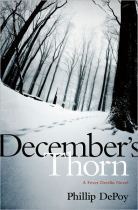
Phillip DePoy: December’s Thorn. On a cold, snowy night, a strange woman shows up at Fever Devilin’s door claiming to be his wife. He offers her a seat by the fire, brews some tea… and the seventh installment of the series, centered around a Georgia folklorist, begins.


January 10, 2013
Review: Tenth of December
Proud to be a Dystopian
by Vince Darcangelo
It was a warm autumn evening at the Gramercy Theater, Oct. 5, opening night of the 2012 New Yorker Festival. The room was thick with literati, and on stage were three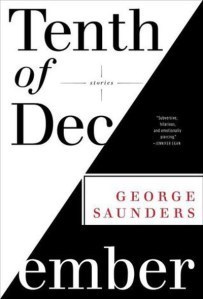 heavyweights: Jennifer Egan (A Visit From the Goon Squad), Margaret Atwood (The Handmaid’s Tale) and George Saunders, whose new collection of short fiction, Tenth of December, was released on Tuesday, Jan. 8.
heavyweights: Jennifer Egan (A Visit From the Goon Squad), Margaret Atwood (The Handmaid’s Tale) and George Saunders, whose new collection of short fiction, Tenth of December, was released on Tuesday, Jan. 8.
The theme of the panel was “Utopia/Dystopia,” and Atwood led off with a brief history and deconstruction of the genre. Utopias and dystopias go hand in hand, she said, because with any utopian idea “there’s always a catch, and the catch is this: Everything’s going to be fine, but first we’ve got to get rid of these people.”
And then we came to Saunders, whose works, such as the exquisite CivilWarLand in Bad Decline, often contain dystopian themes or settings, along with healthy doses of humor and satirical absurdism.
“I never really thought I’d write a dystopian (story),” he said, adding that he first tried to emulate iconic writers like Hemingway and Raymond Carver. It wasn’t working, so he tried something different.
“If I set something in a theme park or the near future,” he said, “the language comes alive.”
And thus, a great writer, and celebrated literary subversive, emerged.
#
Tenth of December is a short and bittersweet 10-tale offering of gripping short fiction, incorporating science fiction and otherworldly elements (similar in tone, in my opinion, to Kurt Vonnegut). The book’s opening tale, “Victory Lap,” which originally appeared in The New Yorker in 2009, concerns an attempted abduction of a teenage girl and the hijinks that ensue.
That’s right, hijinks.
As silly as it is serious, it is the humor that sharpens the dark edge of “Victory Lap.” This is a bold piece of work. Saunders takes chances by shifting points of view and writing from the interior voice of teenagers, but he pulls it off as only he can. There’s a jazzy rhythm and flow to the piece, and it deserves to be read aloud. The story really came to life for me when I heard Saunders read it at the University of Northern Colorado in 2010.
Probably my favorite story from Tenth of December is “Escape from Spiderhead.” It has the classic elements of his fiction: people in the near-future in a seemingly powerless position; the intertwining of corporate and institutional control; wacky goings-on; funny, yet fitting, product names; and an unlikely hero who somehow manages to carve out his acre of humanity within this madhouse.
Specifically, our hero, Jeff, is a convict in a research prison, where his punishment is to be a lab rat for chemical experimentation. As part of a sex study, he is given drugs that create feelings of intimacy and attraction to another person; another that induces loquacity; a performance enhancer (Vivistiff™) that makes Viagra seem like a sugar pill; and another chemical that lowers one’s “shame level.”
The experiments take a dark turn when he is enlisted in a Darkenfloxx™ study. As Jeff describes the drug: “Imagine the worst you have ever felt, times ten. That does not even come close to how bad you feel on Darkenfloxx™.”
The scene is reminiscent of the notorious Milgram experiments, and it concludes brilliantly—somehow both uplifting and tragic. It’s a reminder that great literature doesn’t resolve with the hero winning or losing, but rather redefines what it means for that character to win or lose.
“CivilWarLand in Bad Decline,” for example, is set inside a rundown theme park overrun with violent gangs (to the point that the Civil War re-enactors pack live ammunition in their muskets). The protagonist is a working-class dreamer and father of two who endures disappointment and the threat of violence for the sake of his family. But his idea of winning and losing changes in this theme park.
“Sea Oak,” from his 2000 collection, Pastoralia, is a genre-bending story incorporating new-wave male strippers, a post-industrial ghetto and a dead aunt who refuses to go away. Likewise, it concerns a poor family burdened with violence, and takes a fantastical turn that recalculates the stakes for all involved.
“Sea Oak” won an O. Henry Award Prize and was also nominated for a Bram Stoker Award. How many Bram Stoker nominees have received gushing praise from the New York Times?
#
At the heart of Saunders’ fiction are class issues (he comes from a working-class background and earned an engineering degree from the Colorado School of Mines); the impact of an ever-invasive corporate culture (see “I CAN SPEAK!™” from 2006’s In Persuasion Nation); and the absurdity of the modern workplace.
An example of the latter in Tenth of December is the story “Exhortation,” which is told in the form of a memo from a boss to his underperforming crew. The memo is in reference to “March Performances Stats” and attitudes toward the work being done. He begins by comparing their duties to cleaning a shelf, but of course, it becomes apparent that their labor is far more sinister:
“Even you guys, you who do what must be done in Room 6, don’t walk out feeling so super-great, I know that, I’ve certainly done some things in Room 6 that didn’t leave me feeling so wonderful, believe me…”
Whatever goes on in Room 6, it clearly has nothing to do with shelves. This story calls to mind Saunders’ classic short story, “The 400-Pound CEO,” concerning a worker drone whose job is to kill raccoons for the company Humane Raccoon Alternatives.
In both of these stories, Saunders guides us through a sausage mill as unpleasant as any Upton Sinclair encountered. We see characters doing menial and often unpleasant work, and manipulative and often cruel bosses attempting to put a positive spin on their duties, if for no other reason than to create a healthy façade for the buying public. Greed and rampant corporatization has left the working class in the absurd position of having to abase themselves and others to get by.
I can’t think of a better description of dystopian fiction. Often, the term calls to mind an enslaved, automated world gone grey: a dramatic vision complete with conflicts worthy of the Thunderdome. But with Saunders, the dystopia is more workaday, which makes it all the more chilling.
For Saunders, it’s a way “to say here’s the way we look at habituated reality,” he said at the New Yorker Festival. His fiction breaks the surface of this habituated reality, and it offers us a fresh and not-always-pleasant look at our daily lives.
But it’s not all bad. It’s a world filled with humor, even if it’s of the gallows variety. It’s populated with colorful and unexpected heroes, bizarre-yet-feasible scenarios, and it’s always a fuzzy line between winning and losing.
“For me, the ideal position is to say, yes, it’s horrible,” Saunders said, “but yes, it’s wonderful and let these two things play out.”





